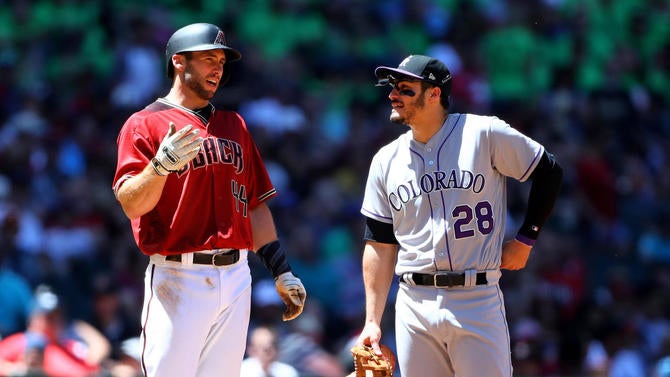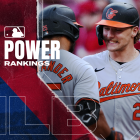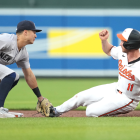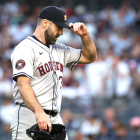For much of the season, it appeared there would be only one true race for a postseason spot in the National League: the NL Central title. The Nationals and Dodgers have huge leads in the NL East and NL West, respectively, and Rockies and Diamondbacks had big leads for the two Wild Card spots. The NL Central was the only remaining source of drama.
That is no longer the case. Sure, the Nationals and Dodgers still have huge leads, but suddenly the NL Wild Card race is quite interesting. Here are the Wild Card standings at the All-Star break:
Record | Run Differential | Games Back | |
Diamondbacks | 53-36 | +102 | +2 |
Rockies | 52-39 | +42 | -- |
43-45 | 0 | 7 1/2 | |
43-45 | +13 | 7 1/2 | |
42-45 | -44 | 8 |
The Rockies had a 7 1/2 game lead on the second Wild Card spot and the D-Backs had a 9 1/2 game lead on a Wild Card spot in general. No race is over at the All-Star break, though those two NL West rivals sure had what appeared to be comfortable leads. If nothing else, they'd built themselves some real nice cushions to fall back on in the second half.
Now, six weeks into the second half, the Rockies and D-Backs have used up most of that cushion. Both clubs have struggled since the All-Star break and now have a few teams breathing down their neck in the Wild Card race. Here are the Wild Card standings as of Monday morning:
Record | Run Differential | Games Back | |
Rockies | 68-56 | +50 | +1 |
Diamondbacks | 67-57 | +86 | -- |
65-60 | +20 | 2 1/2 | |
Cardinals | 63-61 | +48 | 4 |
60-62 | -13 | 6 |
The Rockies have jumped over the D-Backs in the standings, though their lead for a Wild Card spot has dropped from 7 1/2 games to 3 1/2 games. The Diamondbacks have seen their lead shrink from 9 1/2 games to only 2 1/2 games. Yikes. At the All-Star break, the closest teams in the Wild Card race were 7 1/2 games out. Now there's four teams within seven games. (The Pirates are seven games back.)
Needless to say, the NL Wild Card race has become interesting because neither Rockies nor the D-Backs have been able to maintain their torrid first half pace. Arizona especially. Here are their before-and-after records:
Rockies in the first half: 52-49 (+42 run differential)
Rockies in the second half: 16-17 (+8 run differential)
D-Backs in the first half: 53-36 (+102 run differential)
D-Backs in the second half: 14-21 (-16 run differential)
Only the rebuilding Braves (13-22) and Reds (14-23) have worse second half records than the D-Backs among NL clubs.
Both the Rockies and D-Backs have lost seven of their last 10 games, and for Colorado, it's been a total team effort. They've received shaky starting pitching and not enough offense (especially for a Coors Field team), and experienced some ugly bullpen meltdowns. For the D-Backs, it's almost all pitching. They've allowed at least nine runs in four of their last six games, and at least eight runs in six of their last 10 games.

The Rockies and D-Backs have seven head-to-head games remaining and, of course, they both want to sweep all seven games. And that's what the Brewers and the other Wild Card hopefuls want too. They want one team to win all seven games to knock the other down in the standings. If either the Rockies or D-Backs go 4-3 in those seven games, the other Wild Card clubs don't gain much ground. They'd rather one team go 7-0 or even 6-1, allowing them to draw closer to the losing team.
Of course, the Rockies and D-Backs are still in command here. They haven't had great second halves, especially Arizona, but they're still leading the Wild Card race and will have seven chances to create separation from each other. You'd always rather be the team getting chased than the team doing the chasing. That said, those big Wild Card leads they've built in the first half are mostly gone now. It went from looking like there wouldn't be an NL Wild Card race at all to things getting interesting real quick.






















